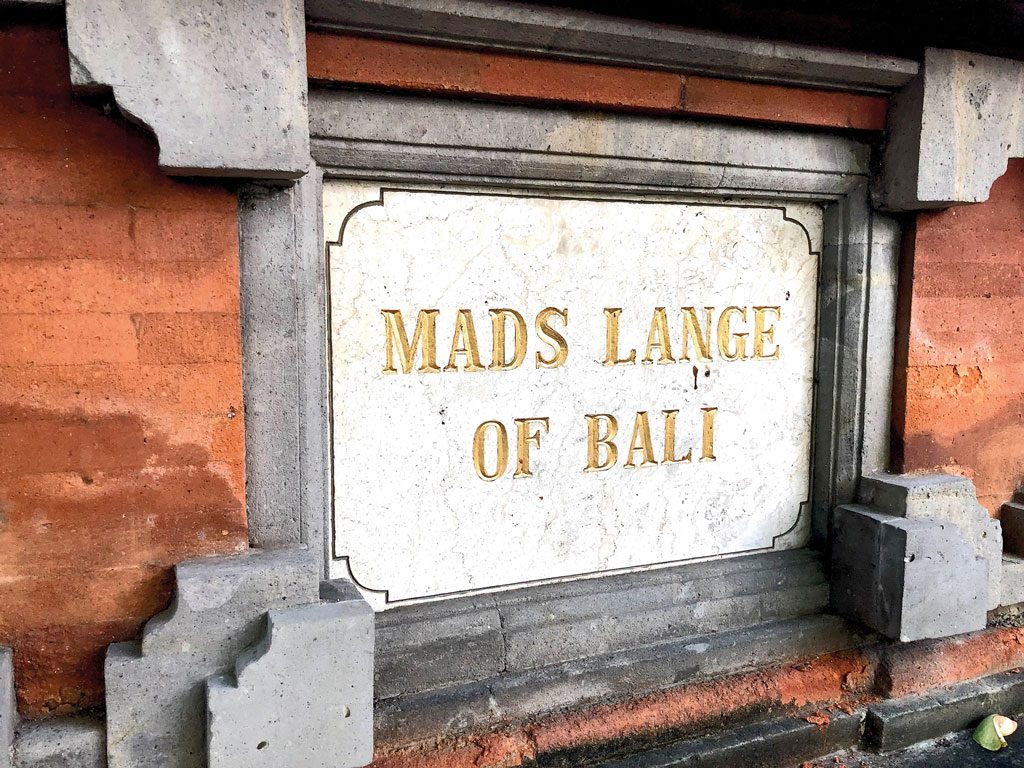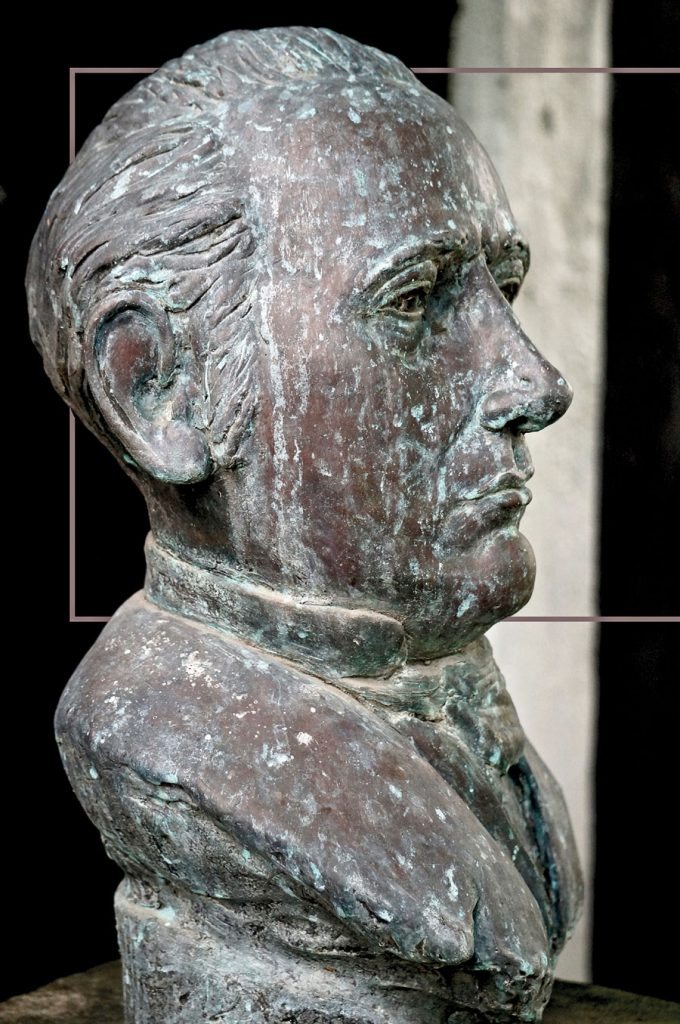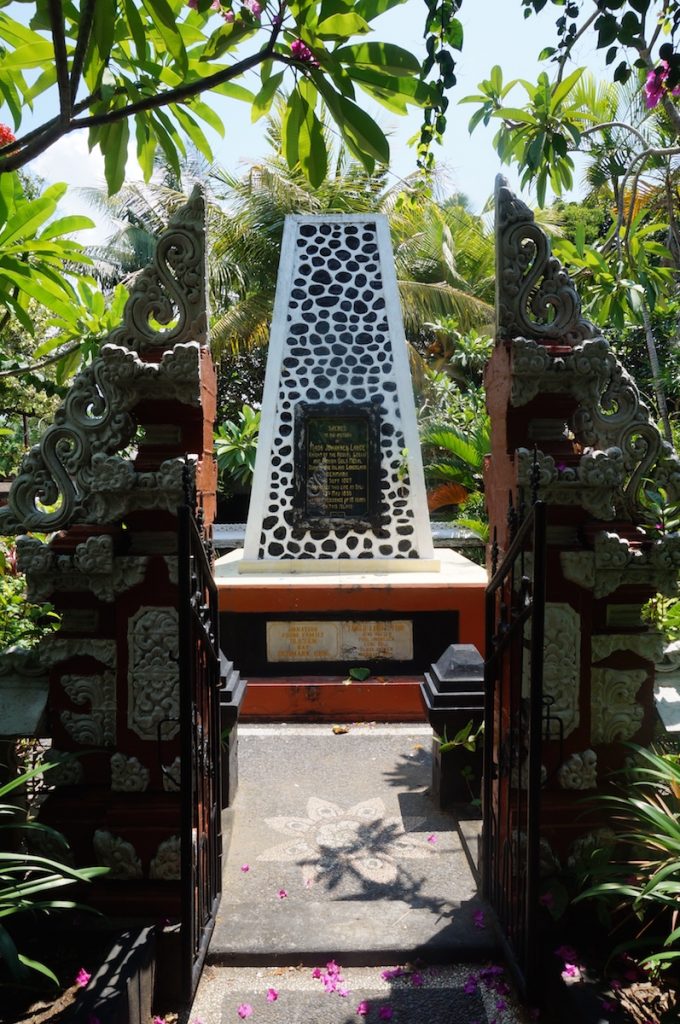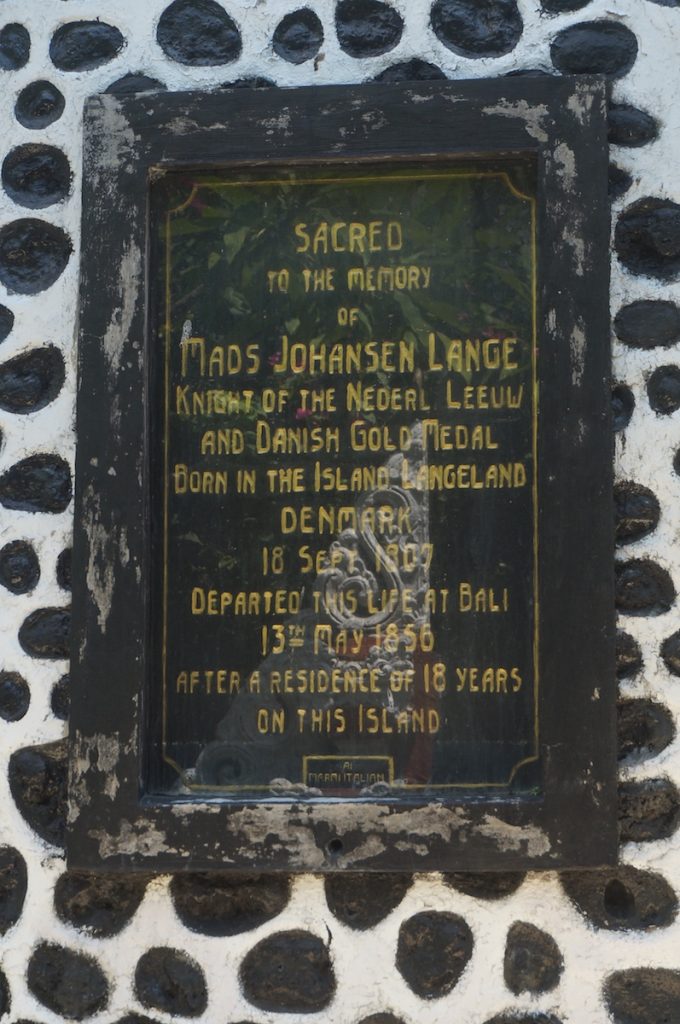If you explore the backstreets of Kuta enough, you’ll come across a road named ‘Jalan Tuan Lange’, dedicated to Mads Lange , a Danish man who had a colourful
Denmark is about as far from Bali as pickled herring is from nasi campur, but there was a period of 18 years when these two very disparate cultures intertwined in a strange vortex of events here in Bali. It was a man named Mads Johansen Lange that allowed this to happen, a proud Danish who, like his ancestors, was a sailor and had the salt of the sea in his veins. A memorial nestles on Jalan Tuan Lange, or Mr. Lange Street, in a quiet area of Kuta cemented the history of the Danish sailor’s ‘venture’ on the Island of the Gods.

Mads Lange’s first foray into the Indonesian archipelago was in the early 19th century when he worked as a member of the crew aboard a Danish commercial vessel which made its local home-port in the neighbouring Lombok. The business of this commercial ship was transporting goods from Denmark and trading them in Lombok. But Lange was not satisfied merely conducting business of the ship’s captain. He considered himself a good sailor, he knew and understood how to trade, and he had clandestinely taken sufficient time to personally cultivate some strategically vital contacts among the locals in Bali, where his ship also laid anchor. All he needed was a propitious moment – the right event occurring at just the right time that would pave the way for his move upwards to huge success.
The outbreak of war provided the right moment for his star to finally ascend. The history of Bali is fraught with small-scale wars – one of the island’s countless kings attacking another. It was one of these wars that gave Lange his big break. This time it was a war between one of Lombok’s kings and one of Bali’s kings. But Lange was nobody’s fool; he sized up the situation, took the measure of both kings and their respective strengths and weaknesses, decided which king was strong enough to win, and bet all his chips on the outcome. Fortunately for him, he was right, because he had already begun lending both moral and material support to the Balinese king.

When the dust settled, Mads Lange was firmly ensconced in Kuta and, with the support of his new best friend the king, had cornered the market on just about all the trade to and from Bali. He traded almost everything and anything he could get his hands on – spices, livestock, fabric, precious stones, gold and more. He even did his former captain one better by making certain that his trade was two-ways; his vessels delivered a shipment of goods then loaded up on local valuables and sailed away selling them door-to-door to nations as far away as China and island-nations as near as Singapore. His approach, revolutionary in its day, earned Lange immediate fame and fortune. And, it apparently also earned him an unhappy enemy.
Mads Lange built an enclave in Kuta. It was a self-contained community, housing all that he needed and all that he possessed, and all those at his command. It had residences, meeting halls, administration buildings, mess halls, kitchens, barracks for his workers and his warriors, repair facilities, and storehouses for the array of armament and ordnance he now needed to guard this compound and its warehouses which grew bigger daily with his vast incoming wealth. This compound was under his personal command, and it was where he held court when one of Bali’s kings would come to call. This elaborate compound was the personal kingdom of this Danish sailor, who, in many ways, had become much richer and much more powerful than any of the kings he allegedly served.
His success led to his instalment as a part-time minor government official for the Dutch. He held the post of Harbour Master in Bali and, probably because of his royal business connections with several of Bali’s kings, he even negotiated minor treaties and contracts between them. He was part of the agreement made in 1849 that solidified Dutch sovereignty over Bali, whilst the Balinese would remain de facto independent.
Never one to shy away from a profit, he even indiscriminately sold guns to the kings so they could wage war against each other more effectively. Perhaps thereby sowing the ultimate seed of his own untimely death.
In 1856, as the Dutch began to take firmer and firmer control of Bali, Lange decided that he had had enough – he had seen the handwriting on the wall and knew that the end of his rich little kingdom was near. Lange decided to retire and return to Denmark. He took great care to pack enough of his wealth aboard his personal vessel so that he could live the rest of his life in comfort. But his past, or some enemy from it, may have caught up with him. As he prepared to depart Bali he died suddenly, some say of poisoning.
Mads Lange lived in Kuta from 1839 until 1856 and was buried near the original site of his royal complex there. His gravesite is still preserved and still proudly stands in Kuta as a stone footnote to this highly peculiar episode in Bali’s colourful history. His grave, a large carved memorial monument, can be easily accessed by either car, motorcycle or on foot as it is quite near the the bypass road from the airport roundabout towards the Simpang Siur underpass direction; or you can just simply search for the Jalan Tuan Lange, which is five-minute drive from the Kuta Night Market.












